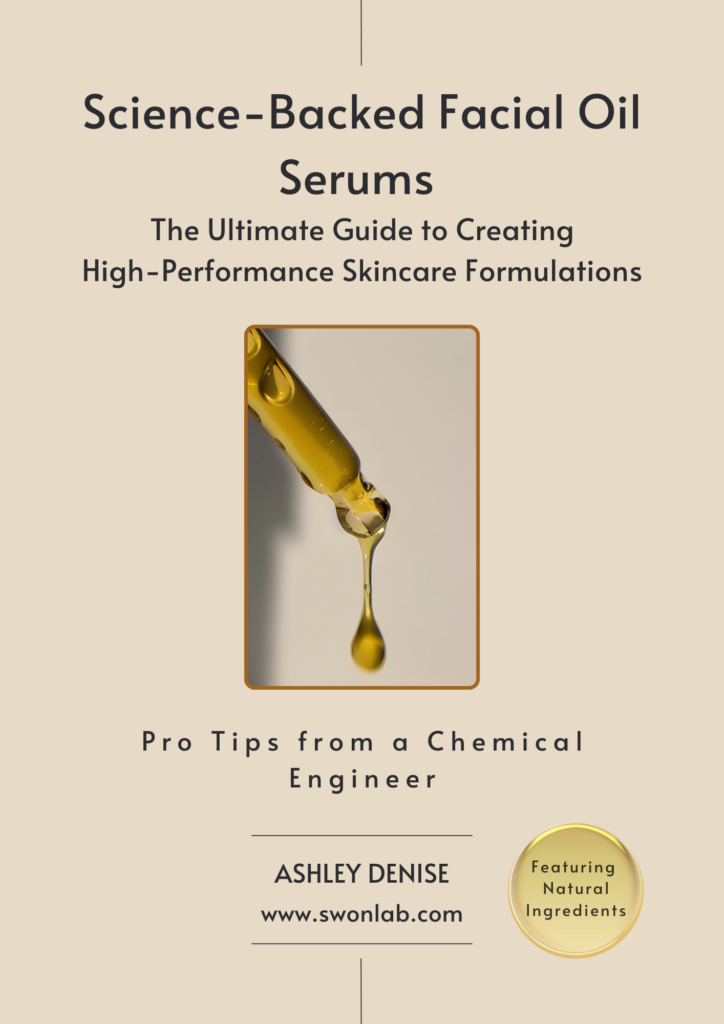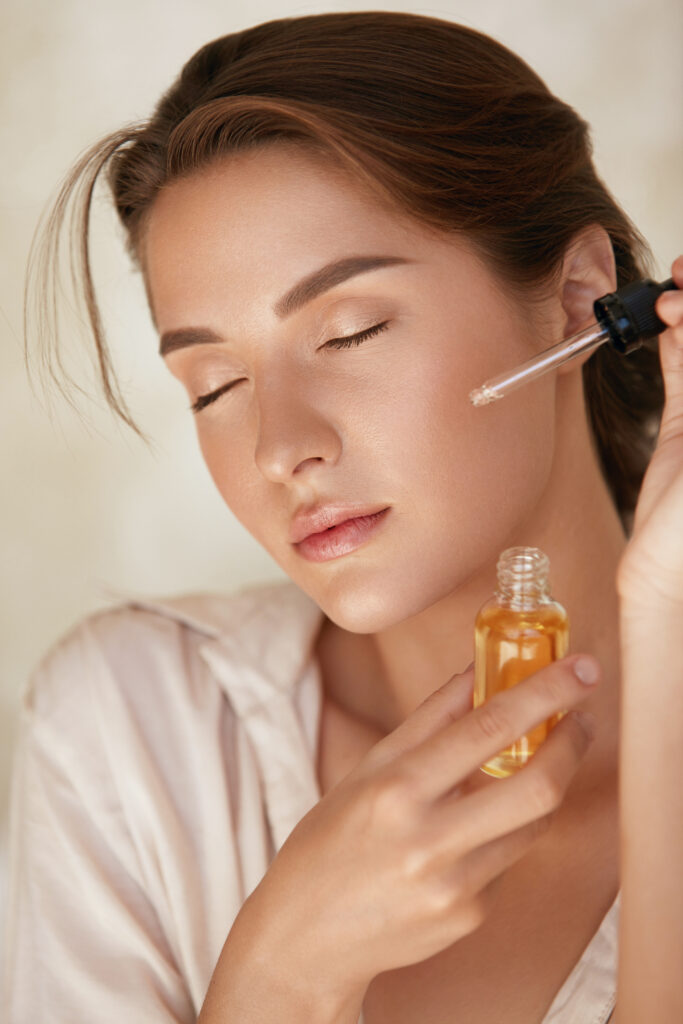Facial Oils for Oily Skin? Yes, Really.
Why facial oil isn’t your enemy—even if you have oily or acne-prone skin.
Best facial oils for oily acne-prone skin might sound like an oxymoron at first…. Greasy T-zones, clogged pores, and stubborn breakouts—haven’t you spent years trying to dry all that out?
But here’s the twist: the right facial oils can actually help regulate sebum production, calm inflammation, and support your skin barrier—without clogging your pores. In fact, avoiding oils completely might be what’s keeping your skin imbalanced.
The key is choosing oils that are non-comedogenic, lightweight, and rich in anti-inflammatory compounds. When used correctly, facial oils can be a powerful ally in your skincare routine—even if you’re dealing with acne.
In this post, we’ll break down:
- Why oily skin still needs oils (and what kind)
- What to look for in a facial oil if you’re acne-prone
- Our top 5 oil picks that won’t clog pores
- Which oils to avoid
- And how to blend your own formula with confidence
Let’s finally stop fearing the word “oil”—and start using it smart.
Why Oily Skin Still Needs Oil
If your skin is already oily, adding facial oil might feel like feeding the beast. But here’s what most people get wrong: oil production and moisture levels are not the same thing. Oily skin can still be dehydrated, inflamed, and struggling with barrier damage—even while producing excess sebum.
When you strip your skin too harshly with drying cleansers or alcohol-heavy toners, your sebaceous glands often overcompensate, producing even more oil to protect the skin. It’s a vicious cycle.
Introducing the right kind of oil—one that mimics your natural sebum or is high in linoleic acid—can actually help your skin rebalance itself. Linoleic acid is an essential fatty acid that oily and acne-prone skin types are often deficient in. Studies show that applying linoleic-acid-rich oils may help reduce clogged pores and improve texture.
Facial oils can also:
- Strengthen the skin barrier, reducing TEWL (transepidermal water loss)
- Calm inflammation, especially in acne-prone or sensitized skin
- Provide a smooth, breathable finish that enhances other products in your routine
The trick isn’t to avoid oils altogether—it’s to avoid the wrong ones.
What to Look for in a Facial Oil for Oily & Acne-Prone Skin
Not all oils are created equal—especially when your skin is prone to clogged pores and breakouts. The key is to choose oils that work with your skin, not against it.
Here’s what matters most:
✅ Non-Comedogenic Profile
Look for oils that have a low comedogenic rating (ideally 0–2). While these scales aren’t perfect, they’re still a helpful guide—especially when combined with your personal skin response.
Note: Even a “low” rating doesn’t guarantee zero breakouts. Always patch test.
🌿 High in Linoleic Acid
Oily and acne-prone skin often lacks linoleic acid, which is essential for balanced sebum and clear pores. Oils rich in linoleic acid are typically lighter and absorb faster.
Examples: Hemp seed oil, grapeseed oil, rosehip oil
🫧 Lightweight & Fast-Absorbing Texture
You want your oil to glide, absorb, and leave behind a soft finish—not a sticky film. Look for oils that don’t sit heavily on the surface of the skin.
Avoid heavy occlusives like coconut oil or wheat germ oil.
🔬 Anti-Inflammatory & Antibacterial Properties
If your skin breaks out easily, choose oils that do double-duty: calm redness and fight acne-causing bacteria.
Examples: Tamanu oil, black cumin seed oil
✨ Bonus: Stability & Shelf Life
Unstable oils can oxidize quickly and cause irritation. Choose oils with lower PUFA content or stabilize your formula with Vitamin E (Tocopherol) and store in dark glass bottles.
✨ Top 5 Facial Oils for Oily & Acne-Prone Skin
These oils are loved by formulating chemists and acne-prone skin warriors alike. They’re light, fast-absorbing, and backed by real results—not just TikTok trends.
🟢 1. Hemp Seed Oil
Why it works:
Hemp seed oil has one of the highest linoleic acid contents among all carrier oils (~55–60%). It’s non-comedogenic, deeply soothing, and has a dry, fast-absorbing feel.
Bonus: Contains a small amount of gamma-linolenic acid (GLA), which may help reduce inflammation and support barrier repair.
How to use:
Use alone or blend with squalane for extra slip. Works beautifully under lightweight moisturizers or as a night treatment.
🟣 2. Grapeseed Oil
Why it works:
Another linoleic-acid-rich favorite, grapeseed oil is light, astringent, and ideal for congested skin. It also contains resveratrol, a powerful antioxidant.
Comedogenic rating: 1 — generally safe for oily skin types.
How to use:
Apply a few drops to damp skin post-cleansing. Pairs well with niacinamide serums or water-based actives.
🔴 3. Rosehip Seed Oil
Why it works:
Not only is rosehip oil rich in linoleic acid, but it’s also a natural source of trans-retinoic acid (a vitamin A derivative). It supports cell turnover and helps fade post-acne marks.
How to use:
Best used at night. Start slow—1–2 drops mixed into your moisturizer or facial oil blend.
⚠️ Tip: Look for cold-pressed and store it in a dark bottle—this oil is fragile and oxidizes quickly.
🟤 4. Tamanu Oil
Why it works:
Tamanu is a bit richer in texture but excellent for active breakouts. It has documented antibacterial and wound-healing properties—great for post-inflammatory pigmentation and barrier repair.
How to use:
Spot treat blemishes or add a few drops to a lighter carrier oil (like hemp or squalane) to create a balanced blend.
⚪ 5. Squalane
Why it works:
Technically not a triglyceride oil but a hydrocarbon, squalane is ultra-light, super stable, and non-comedogenic. It mimics natural skin lipids and absorbs instantly, leaving no greasy residue.
How to use:
Apply 2–3 drops on damp skin morning and night. Great solo or layered under SPF.
⚠️ Oils to Be Cautious With (Even If They’re Natural)
Just because an oil is natural doesn’t mean it’s right for your skin—especially if you’re dealing with clogged pores or acne. Some oils are rich in fatty acids that tend to sit heavily on the skin, trap bacteria, and worsen breakouts for certain skin types.
Here are a few oils that oily and acne-prone users should approach with caution:
❌ Coconut Oil
Rich in lauric acid and highly occlusive, coconut oil is a no-go for most acne-prone skin types.
- Comedogenic rating: 4
- Tends to trap heat and bacteria under the skin
- Great for body care, not for facial use in this context
❌ Cocoa Butter
Lovely for dry elbows and stretch marks, but not your face.
- Very thick and waxy
- Often clogs pores and exacerbates blackheads
- Comedogenic rating: 4–5
❌ Wheat Germ Oil
Though it’s high in vitamin E, wheat germ oil has a very high comedogenic rating.
- Sticky texture
- Easily oxidizes
- Risk of breakouts in oily or reactive skin
❌ Olive Oil
Olive oil is rich in oleic acid, which may irritate some skin types and disrupt the barrier.
- Can feel heavy and greasy
- May trigger breakouts in acne-prone users
- Not ideal for lightweight facial formulations
⚡ Pro Tip: If you’re not sure how your skin will respond to an oil, always patch test before applying to your face—and avoid using high-comedogenic oils as base ingredients.
🧪 Tips for Blending Your Own Oil for Acne-Prone Skin
Making your own facial oil blend is easier than you think—especially when you’re working with a short ingredient list. But oily and acne-prone skin needs a bit more care in both ingredient selection and ratios.
Here’s how to build a smart, skin-friendly formula:
🧼 Keep It Simple and Lightweight
Stick to 2–3 carrier oils max. Overcomplicating the blend can lead to clogged pores and unstable textures.
Example base combo:
- 60% hemp seed oil
- 30% grapeseed or squalane
- 10% rosehip seed oil
🌿 Use Essential Oils with Caution (or Skip Them Altogether)
Essential oils like tea tree, lavender, or geranium can offer antibacterial benefits—but they can also irritate sensitive or compromised skin.
- Max dilution: 0.5–1% total
- Always blend into a carrier oil—never apply neat
- When in doubt, go fragrance-free
🧴 Add an Antioxidant (like Vitamin E)
Especially important if you’re using oils that oxidize quickly (like rosehip or grapeseed).
- Tocopherol at 0.2–0.5% will help extend shelf life and reduce skin irritation risk
- Store your blend in a dark glass dropper bottle away from heat and light
📅 Use Within 3 Months
DIY facial oils don’t contain preservatives. Even though they’re water-free, oxidation and contamination can still happen over time.
- Make small batches
- Always use clean hands or tools when applying
🧠 Remember: It’s not about “killing” the oil on your face—it’s about balancing your skin’s ecosystem.
✅ Final Thoughts: Don’t Be Afraid of Oils—Just Choose the Right Ones
Having oily or acne-prone skin doesn’t mean you have to avoid facial oils altogether—it just means you have to choose wisely. The right oils can help calm inflammation, balance sebum production, and support your skin barrier without making your skin feel greasy or overloaded.
Here’s your quick recap:
- Choose oils high in linoleic acid (like hemp, grapeseed, rosehip)
- Avoid heavy, pore-clogging oils (like coconut or cocoa butter)
- Keep your blends simple and stable—you don’t need 10 ingredients for great results
✨ Want to explore more high-performance oils beyond just acne care?
Check out our guide on The 5 Best Oils for Luxury Facial Serums—designed for glow, elegance, and results.
📖 Want to create your own oil blend that’s actually backed by science?
Our Oil-Based Serum Formulation Guide is your ultimate companion. With 163 pages of formulation tips, ingredient breakdowns, and expert-tested recipes, it’s perfect for beginners and skincare entrepreneurs alike.

💡 Learn how to:
- Choose the best oils by skin type (including oily & acne-prone)
- Blend effective, stable oil-based serums
- Avoid common formulation mistakes
- Build your own product line with confidence
Your oils deserve more than guesswork.
Formulate with purpose.
Get your copy of the Oil-Based Serum Formulation Guide by SwonLab and start creating professional-level blends from day one.
🔒 Secure checkout · Instant digital delivery · No subscription

